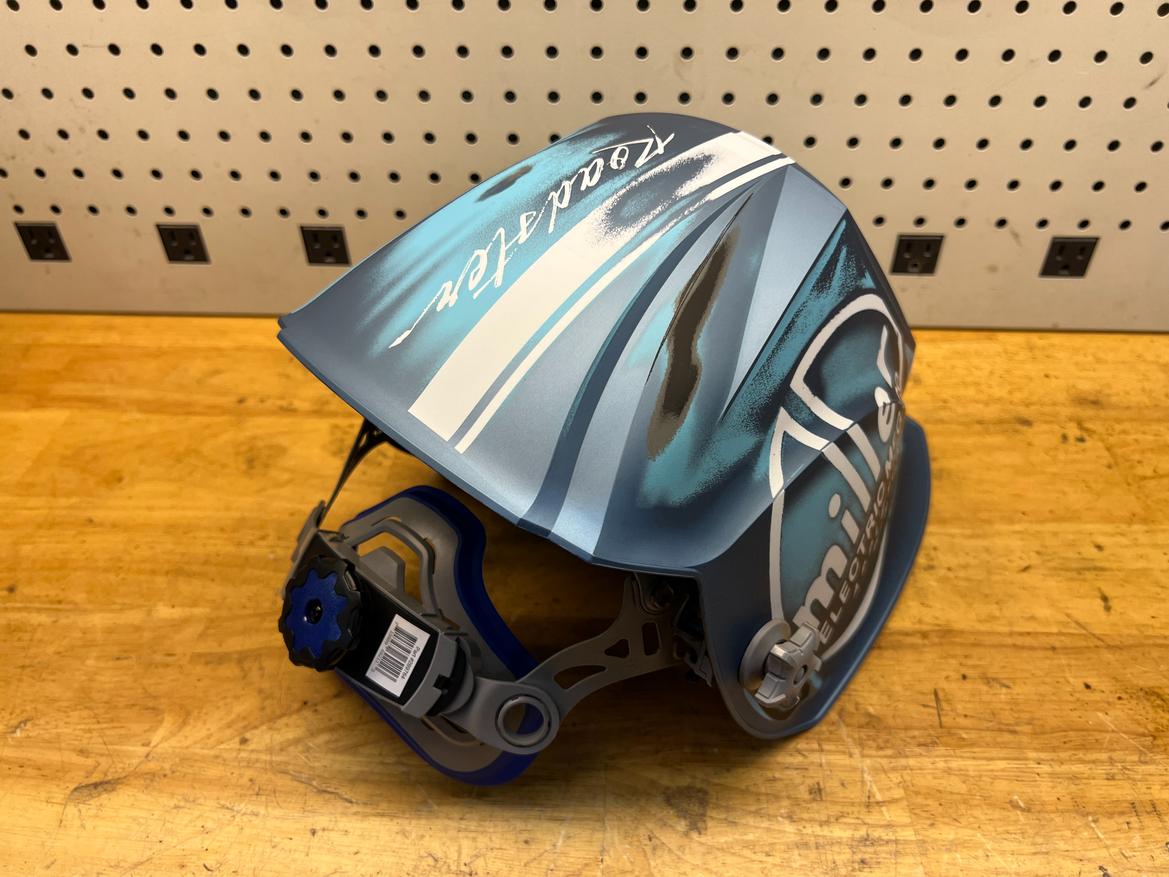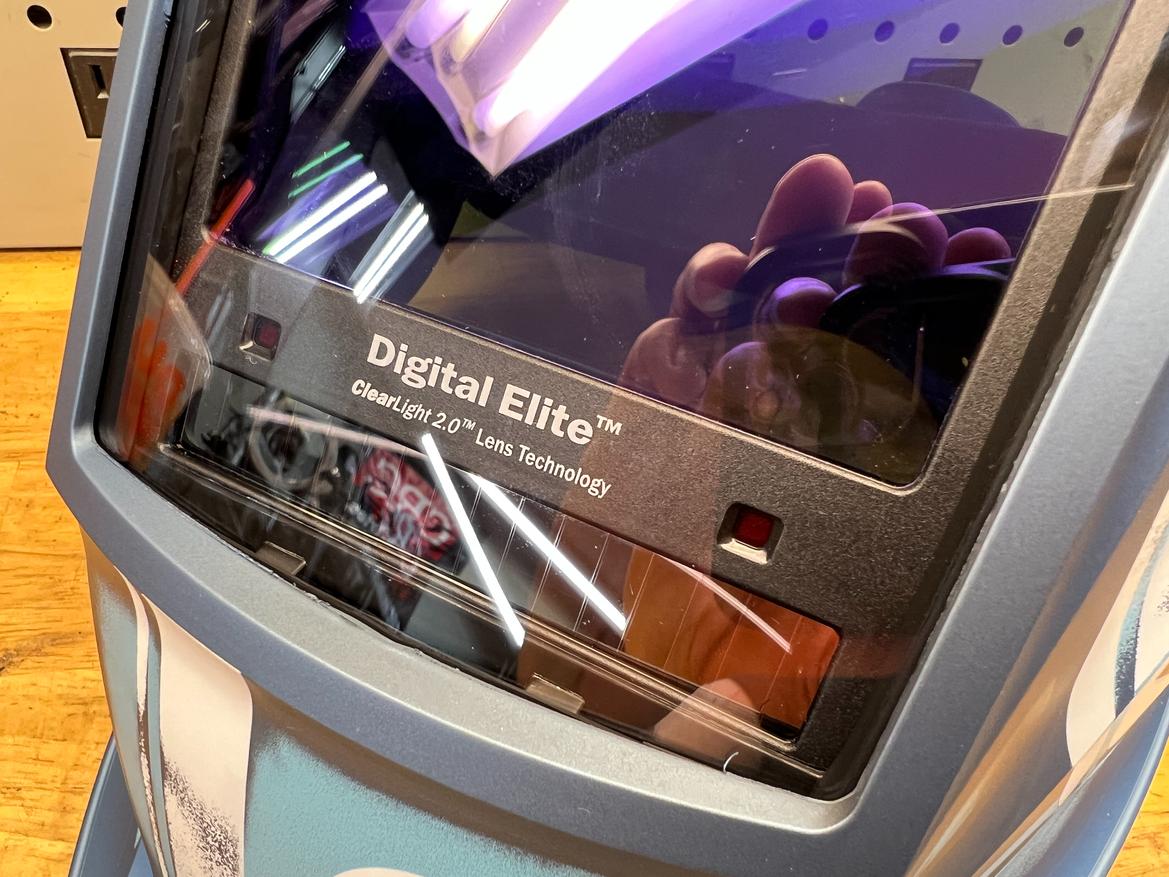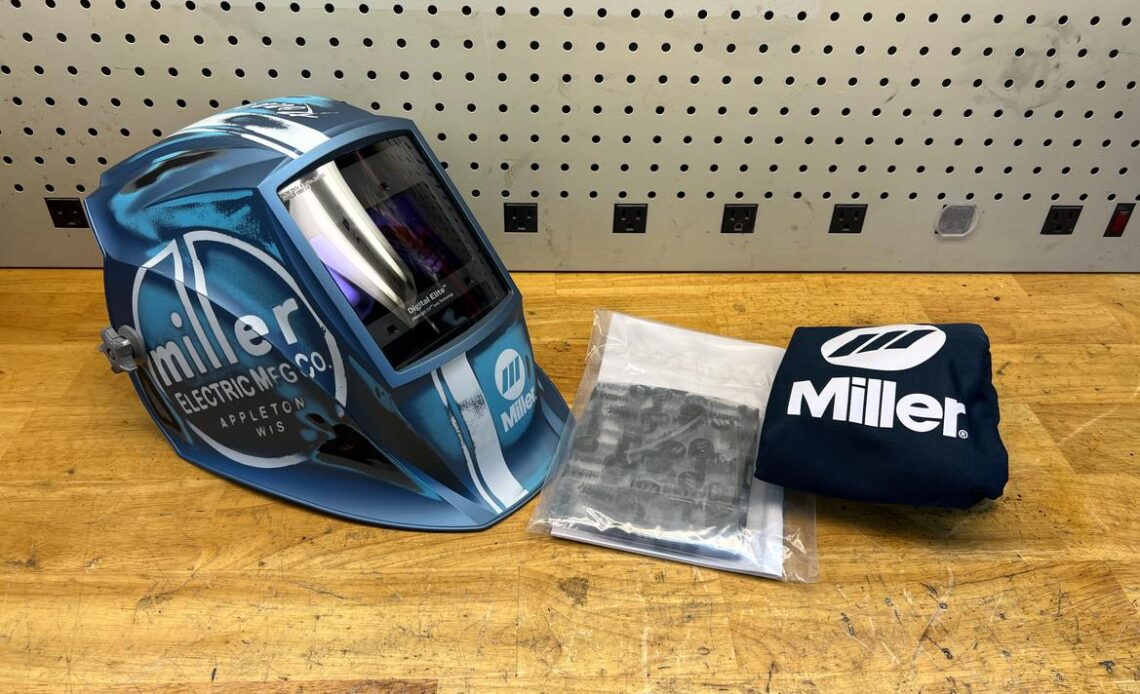New products show up in our garage all the time, usually plastered with hyperbolic language proclaiming them to be the best thing since sliced bread.
So we weren’t that surprised when this $465.37 Miller welding helmet–technically designated the Digital Elite, Vintage Roadster, Clearlight 2.0–showed up proclaiming it was better than every other one. See, we’d been down this road before, upgrading a few years back from a cheap off-brand helmet to one we’d bought for about $100.
That upgrade was night-and-day, and we found ourselves making prettier, stronger welds with less effort. Since we already had a better helmet, what’s the point of upgrading again? And what the heck is “ClearLight 2.0 Welding Helmet Lens Technology,” which Miller claims provides twice the clarity?
We figured we’d try out this fancy Miller and comment on some tiny nuances or features that only somebody welding all day every day would appreciate. In our home shop, we just didn’t think we’d notice a difference–never mind a $400 difference.

But wow, were we wrong. This helmet is so good, we instantly banished our others to “guest” duty and will now only weld with this wherever we go.
First up, that ClearLight 2.0 marketing spiel. Yeah, turns out it’s real. If anything, the comparisons on the website don’t do this justice–it’s like going from watching a weld in black and white to watching it in full color, and it’s a game changer.
We figured this difference would only be helpful to professionals, but we think it’s more helpful for amateur welders like us; it’s stunning how much is actually happening in a weld puddle, and seeing that means you can change it for the better.
This better view might also be because we didn’t flash ourselves nearly as much, either. We’re frequently welding in compromised positions–think roll cage feet or similar–which means we’re constantly blocking the sensor in a normal autodarkening helmet.
Miller solves that in a few ways here. First, with more arc sensors (four total). And second, with a feature called X-Mode, which electromagnetically senses the weld. Combine the two, and we still haven’t managed to flash ourselves while wearing this helmet.

And when the lens isn’t darkened, it’s way, way lighter. In a normal helmet, we’re constantly flipping it up as the light state just isn’t that bright.
In this helmet, we’ll leave it down for the entire…
Click Here to Read the Full Original Article at Grassroots Motorsports Online Articles…

